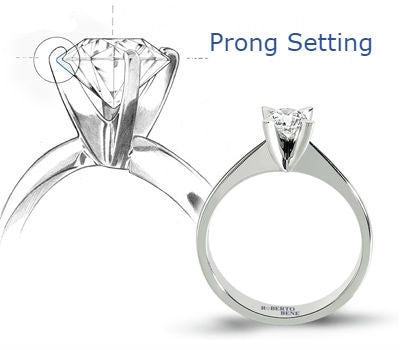The diamond goes through many stages as it transforms into jewelry. One of these stages which requires labor and mastery is the installation of the stone, that is, the setting process. Goldia.com will educate you about the types of setting options and and their requirements with this informative article.
The diamond jewelry production, which started with the exodus of the diamond, is a very high laborious and expertise demanding mastery that needs to be done by qualified setters. The jewel that passes through all stages is called setting, in which the stone and the stone are assembled. The master who accomplishes this work is also called setter.
When the setting type is determined; the size of the stone, the structure of the design is important. As far as the other stages of attention are concerned, the masonry phase of the stone is very important. Although the first priority is known as firmly grinding the material, an incorrectly preferred type of encrustation can affect the reflection and brilliance of the stone in the opposite direction. Therefore, it is necessary that the master who will do the setting is competent and has enough technical skills and experience. Briefly, setting; the light and reflections on the stone must be carried to the highest quality and the metal should be well-made.
Types of Settings:
The setting types are chosen in the most accurate way to fit the usage area of the diamond as mentioned above. There are 5 kinds of settings types which are frequently used.
Prong Setting:
In this frequently preferred diamond assembling technique, the thickness of the prong structure varies with the size of the diamond. Structural differences are entirely attributed to the design of the ring model. The diamond is placed in these prongs and compression is achieved by means of screwing. Meanwhile, the shape of the progns holding the stone is adjusted according to the customer's preferences but the adjustment to the karat weight is adjusted by the master's experience. While prongs may be preferred for the purpose of stones in 0.50 carats and more diamonds, prongs with thicker nails may be preferred for a little more glaze for lower diamond carats.The stone on the prongs is placed in the notch and compressed between the prongs. The number of prongs in this setting type varies depending on the shape of the stone and the model. Most frequently used quotesThe numbers are 4 and 6.
Channel Set (How to Channel Set Diamonds?):
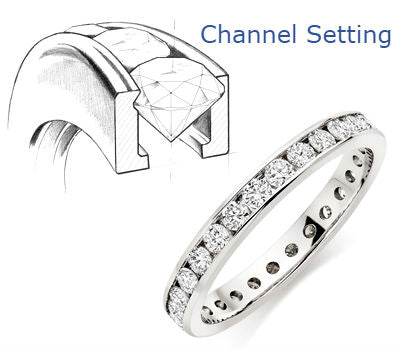
Depending on the shape of the stone and the floor on which it is mounted, it is sometimes possible to simply slide the parallel channels (stone wall) open. Of course it is very important that the metal does not bow, the channels are at the same level and the same, and the pressure on the stone keeps rolling.
This method is based on a system of placing the stone between the two surfaces parallel to each other with the appropriate milling cutter. Duct closure is round, round, square (calibrated), a form of stone installation applied to stones.
Tension Setting:
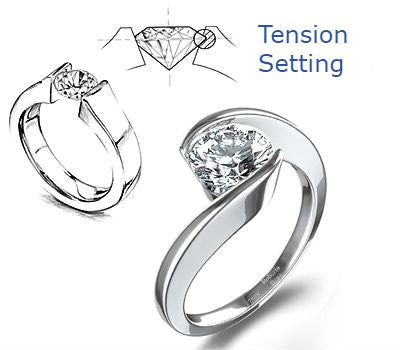
It is a stone setting technique which is made by compressing the stone by using the tensile force of the mine. It is only this tension that holds a diamond. It is preferred in different ring models that stone is suspended in the air, especially platinum rings.
It is a method of fixing the stone by clamping it between two open ends by utilizing the applied tensile strength. Rock will not be exposed to any other effects other than this tensile force. It is preferable to apply this setting in higher tension-ed styles.
Bezel Set Setting (How to Set Diamond in a Bezel):
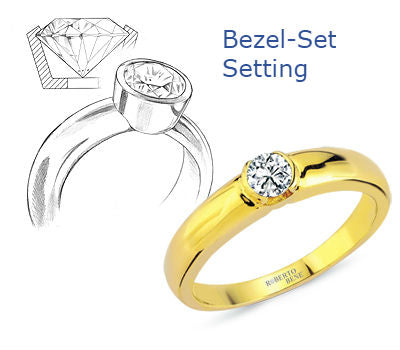
It is the easiest and simplest method. It is applied to many stones with cabochon cuts. six flat, top curved stone form.
Pave Setting:
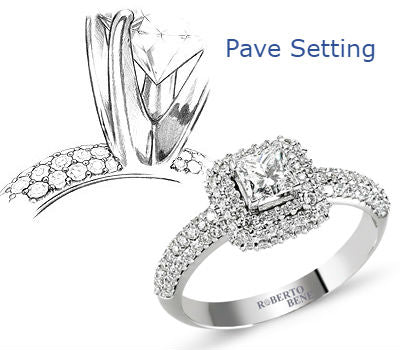
It is the preferred setting method in the use of very small size diamond stones and in the models that will be covered with completely assembled diamonds. The prongs are placed between the nails (5,6 prongs); but so much stone is used that the mine is almost invisible.
Keyterms: brilliant diamonds channel wall engagement ring princess cut diamonds







